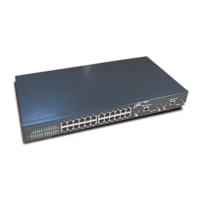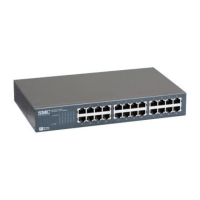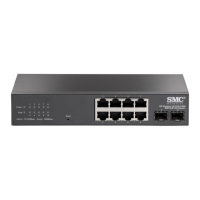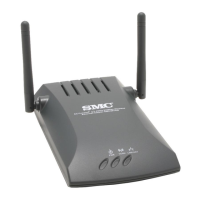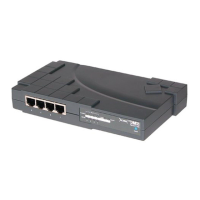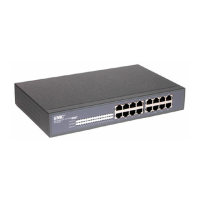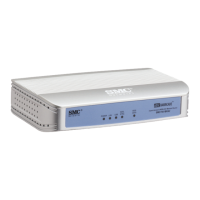N
ETWORK
P
LANNING
2-4
Making VLAN Connections
VLANs can be based on port groups, or each data frame can be explicitly
tagged to identify the VLAN group it belongs to. When using port-based
VLANs, ports can either be assigned to one specific group or to all groups.
Port-based VLANs are suitable for small networks. A single switch can be
easily configured to support several VLAN groups for various
organizational entities (such as Finance and Marketing).
When you expand port-based VLANs across several switches, you need to
make a separate connection for each VLAN group. This approach is,
however, inconsistent with the Spanning Tree Protocol, which can easily
segregate ports that belong to the same VLAN. When VLANs cross
separate switches, it is therefore better to use VLAN tagging. This allows
you to assign multiple VLAN groups to the “trunk” ports (that is, tagged
ports) connecting different switches.
Figure 2-3. Making VLAN Connections
Note: When connecting to a switch that does not support IEEE 802.1Q
VLAN tags, use untagged ports.
Finance
Marketing
VLAN 3
Untagged Ports
VLAN
unaware
switch
Tagged Port
VLAN
aware
switch
T
Ports
Finance
VLAN 3
R&D
VLAN 2
Testing
R&D
Testing
VLAN 1
VLAN 2
VLAN 4
agged
1X
3X
5X 7X
2X
4X
6X
8X
Multi-mode
100M Fiber
TigerSwitch 10/100
6709FL2

